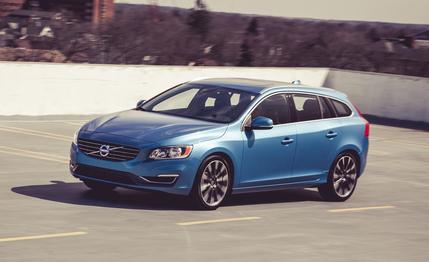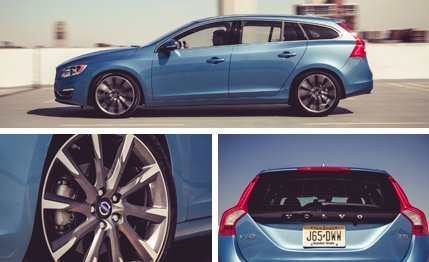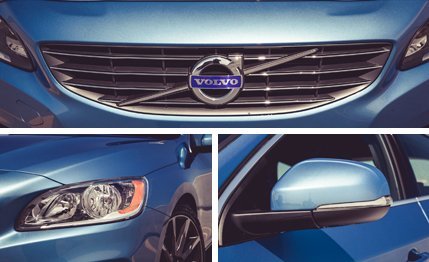
 Instrumented Test
Instrumented Test
Station wagons used to be a Volvo strong suit, amounting to a hefty percentage of the company’s product mix. That was before the “crossover” became a household word and before SUVs in all their rich variety upstaged conventional wagons, eventually eliminating them from almost every showroom. Volvo certainly isn’t about to retreat from the crossover sweepstakes, but for that discerning minority of buyers who still prefer the versatility and driving pleasure that go with a small, nimble wagon, it’s heartening to see the company returning to one of its core competencies.
Based on the S60 sedan, the compact V60 is smooth, competent, quick on its feet, and, yes, sexy. Almost without exception, Volvo’s station-wagon archives are stacked with a long series of vehicles whose styling seems to have been laid down by someone imprisoned in a Lego factory.
The V60 is obviously different. There’s hardly a straight line on the exterior, and if the downward slope of the roofline from the B-pillar aft eats a bit of cargo space, the confluence of curves culminating in the forward-slanted rear hatch is worth the trade. The sloping nose and the front fender flares lend a sporty look to the V60’s face, and the muscular haunches suggest power. To some eyes, this is the best-looking vehicle in Volvo’s entire inventory. Not to mention the best-looking wagon in the business.


Mild Muscularity
To be honest, the suggestion of muscularity isn’t quite vindicated by what’s under that sexy snoot—not in our test car, at any rate. The T5 Drive-E is the base V60, with Volvo’s new direct-injected 2.0-liter turbo four supplying thrust to the front wheels via a new, eight-speed automatic transmission. The engine produces 240 horsepower and 258 lb-ft of torque, with an overboost function that spikes torque output to 280 lb-ft for 10 seconds if the driver mats the pedal against the firewall and holds it there that long. The only downside is that big throttle stabs make the front-drive wagon’s steering momentarily light and darty.
From a standing start, 10 seconds of WOT activity takes the V60 close to 80 mph. The mile-a-minute sprint consumes 6.2 seconds, and the quarter-mile comes up in 14.9 at 95 mph—not exactly slow, but not really quick, either. For real haste, the V60 T6 R-Design brings a 325-hp turbo inline-six and all-wheel drive to the party, and the Polestar version of the same engine ups the output ante to 345 horses. AWD helps quell torque steer of the tweaked six-cylinder wagons.
Even though the 2.0-liter won’t provoke oohs and aahs at the drag strip, it’s smooth and responsive on the road, making reasonably short work of tight passing situations. The eight-speed auto is more responsive than many others in automatic mode, and the optional paddle shifters add an element of additional control when the driver gets into decreasing radii and switchbacks. The driver can choose between Normal and Sport modes, but the transmission will upshift on its own when approaching redline in either.


One powertrain element that could use some refinement has to do with Volvo’s Drive-E system, the company’s new ECO+ technology. In addition to optimizing shift points and throttle response for enhanced fuel efficiency, it has three main functions: ECO-coast, which eliminates engine braking by disengaging a clutch and allowing the car to coast stress-free when the driver takes his foot off the throttle; ECO-climate, which disengages the air-conditioning compressor to reduce engine load (the driver can restart the A/C function by punching a switch or simply deactivating ECO+); and engine stop-start.
The stop-start function is the element that becomes intrusive. Its shutdown threshold is 4 mph, when the car is slowing to a stop, and it never misses an opportunity to take the engine offline. The function can’t be called seamless and, for all its good intent, quickly becomes irritating in urban traffic.
EPA fuel-economy ratings are respectable: 25 mpg in the city and 37 on the highway. Our real-world result was 27 mpg, which is also respectable, considering the workout this wagon absorbed.